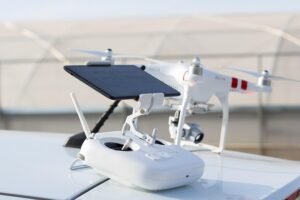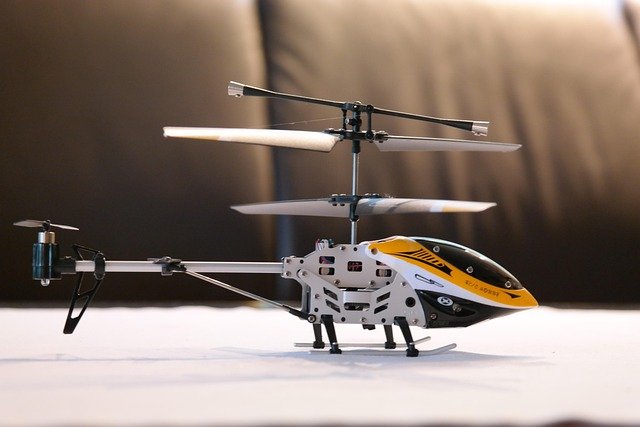What Is a Remote Control Aircraft?
Definition of Remote Control Aircraft
A remote control aircraft—commonly called an RC aircraft—is a small, model airplane or aerial vehicle that is piloted from a distance using a specialized radio transmitter. These hobby-grade machines are designed to mimic real aircraft in appearance and flight behavior. They are controlled by enthusiasts for recreational, educational, or even professional purposes like aerial photography or STEM learning. RC aircraft range from simple beginner planes to advanced electric ducted fan (EDF) jets and aerobatic flyers.
Key Components
To understand how RC aircraft function, it’s important to know the essential components involved:
- Transmitter: This is the handheld remote device the pilot uses to control the aircraft’s movements. It sends radio signals to the aircraft.
- Receiver: Installed inside the aircraft, the receiver picks up signals from the transmitter and sends them to the control surfaces and motor.
- Propeller: This rotating blade, driven by the motor, generates the thrust required for flight. Some RC aircraft use jet propulsion instead.
- Motor: Usually electric, though sometimes gas-powered, the motor drives the propeller and powers the aircraft’s flight systems.
These components work together seamlessly to enable real-time teleoperation, giving the pilot full control over flight dynamics.
Difference Between RC Planes and Drones

While both RC planes and drones are forms of remote-controlled aerial vehicles, there are key distinctions:
- Design & Flight Mechanics: RC planes usually have a fixed-wing design and are meant to replicate conventional airplane flight. Drones, especially multirotors, hover and maneuver using multiple rotors and do not require forward motion to stay aloft.
- Control System: RC planes are controlled manually through pilot skill and input. Drones often include GPS, stabilization systems, and automated flight modes that assist or replace manual control.
- Purpose: RC planes are traditionally used as a hobby or training tool. Drones are commonly used for aerial photography, surveying, and industrial applications in addition to recreational flying.
How Remote Control Aircraft Work
Remote control aircraft operate using a sophisticated but accessible system known as radio control (RC). At the heart of every RC plane is a combination of electronic components and aerodynamic design that enables seamless remote operation. This system allows users to control their RC airplane in real time, providing a true flight experience from the ground.
Role of Radio Control System
The radio control system is the communication bridge between the pilot and the aircraft. It includes a transmitter, typically a handheld device with joysticks and switches, and a receiver inside the plane. When the pilot moves the controls, the transmitter sends encoded signals through specific radio frequencies. These signals are received and interpreted by the onboard receiver, which adjusts the aircraft’s control surfaces like the rudder, elevator, and ailerons.
Signal Transmission and Response
Signal transmission is instantaneous, allowing for real-time adjustments mid-flight. The system uses radio frequencies—usually 2.4GHz—for interference-free communication. Modern receivers often come with multiple channels to control throttle, direction, and sometimes even landing gear or flaps. Quick signal response ensures stability and precise maneuverability, especially during takeoff, mid-air turns, and landing.
Power Source and Propulsion System
Most RC aircraft are powered by electric batteries (LiPo), although some advanced models use gas engines. The motor converts this power into motion by spinning the propeller or fan (in EDF jets), generating thrust. The propulsion system directly influences the plane’s speed, altitude, and endurance in the air.
Real-Time Teleoperation and Flyability
Thanks to these combined systems, pilots experience real-time teleoperation, meaning they control the aircraft as if they were onboard. The flyability of a remote control aircraft depends on its design, weight distribution, and power-to-weight ratio. Beginner planes are often built for stability and ease of control, while advanced models offer greater responsiveness and acrobatic potential.
RC Planes by Type
Remote control aircraft come in a variety of types, each designed for a specific purpose, skill level, and flight experience. Whether you’re a beginner exploring the skies for the first time or an experienced flyer looking for advanced performance, there’s an RC airplane suited for every enthusiast. Below are the main categories of RC planes you’ll find in the hobby:
Trainer RC Planes (Best for Beginners)
Trainer RC planes are ideal for new pilots. These model airplanes are designed with high-wing configurations for stability, slow flight speeds, and easy handling. Built from durable materials like foam, they can withstand crashes and are typically powered by electric motors for convenience. Many come ready-to-fly (RTF), requiring minimal setup—making them perfect for anyone starting their remote control aircraft journey.
Sport Planes (Aerobatic Flyers)
Sport planes are designed for pilots with intermediate experience who want more agility and performance. These RC aircraft are capable of aerobatic maneuvers such as rolls, loops, and inverted flight. Their sleek, lightweight designs paired with responsive control systems make them perfect for hobbyists who enjoy dynamic flying styles.
Scale Model Planes (Realistic Aircraft Models)
Scale model RC planes replicate real-life military or civilian aircraft with impressive attention to detail. These realistic RC airplanes are popular among collectors and aviation fans. Though visually stunning, they often require advanced flying skills due to their scale-specific aerodynamics and more complex control systems.
EDF Jets (Electric Ducted Fan Aircraft)
EDF (Electric Ducted Fan) jets are high-performance RC planes that simulate jet aircraft. Instead of propellers, they use a ducted fan powered by a high-speed electric motor to produce jet-like thrust. EDF jets are fast, sleek, and exciting, but they are better suited for advanced flyers due to their speed and reduced stability compared to trainers.
Seaplanes (Water Takeoff Capable)
Seaplanes are a unique category of remote control planes designed for water takeoffs and landings. They feature float-equipped fuselages or hulls, allowing them to operate on lakes, ponds, or calm coastal waters. Seaplanes offer a fun challenge for those looking to expand their RC flying beyond traditional airstrips or open fields.
Popular Remote Control Aircraft Models
Choosing the right RC plane is easier when you know which models are trusted by beginners and experienced flyers alike. Whether you’re shopping for your first remote control aircraft or upgrading to a more advanced model, these popular options offer a great mix of performance, reliability, and user-friendly features.
LEAMBE RC Plane with 3 Flight Modes
The LEAMBE Remote Control Aircraft Plane is one of the most beginner-friendly models on the market. Designed for both adults and kids, it features three adjustable flight modes—beginner, intermediate, and expert—making it ideal for pilots at every skill level. Its durable build, one-key U-turn function, and stable flight characteristics make it a top pick for those learning to fly. Available on platforms like Amazon, this RC airplane is often highlighted for its balance of price and performance.
Amazon Best-Sellers
Amazon hosts a wide selection of best-selling RC airplanes, ranging from basic trainers to aerobatic sport planes and even EDF jets. These models often come with RTF (Ready-to-Fly) kits that include everything you need to get started. Popular listings usually include customer reviews, video demos, and detailed specifications, helping you make an informed choice. Brands like E-flite, VOLANTEXRC, and Top Race frequently dominate Amazon’s top charts for radio control aircraft.
Horizon Hobby and Banana Hobby Models

Horizon Hobby and Banana Hobby are two of the most trusted names in the RC world. Horizon Hobby offers a wide range of planes, including trainer RC planes, warbirds, and scale model aircraft, all backed by high-quality components and reliable customer support. Meanwhile, Banana Hobby is known for its extensive lineup of EDF jets, gas-powered planes, and premium model airplanes that appeal to both collectors and seasoned hobbyists. Their online stores also provide spare parts, accessories, and upgrade options for customizing your aircraft.
Key Features to Consider When Buying
When purchasing a remote control aircraft, especially as a beginner or hobbyist, it’s essential to evaluate several critical features that affect performance, ease of use, and long-term satisfaction. The right RC plane should match your skill level while offering the design and support needed for safe, enjoyable flights. Here are the top factors to consider:
Flyability and Skill Level
Flyability refers to how easy and stable an RC airplane is to control. Beginners should choose trainer aircraft with built-in stabilizers, slower speeds, and responsive handling. Look for features like one-key takeoff/landing, auto-stabilization systems, and beginner flight modes. As you gain experience, you can upgrade to sport planes or EDF jets that require more precise control and quicker reaction times.
Aircraft Design and Aerodynamics
The aerodynamic design of the aircraft determines how it performs in the air. High-wing aircraft typically offer better stability and are ideal for beginners. Low-wing planes, meanwhile, are more agile and suited for intermediate to advanced flyers. Key elements to check include wing shape, center of gravity, weight distribution, and airfoil design—all of which impact lift, drag, and maneuverability.
Durability and Material Quality
New flyers are likely to crash, so the material quality of your model matters. Remote control planes made from EPP or EPO foam are both lightweight and impact-resistant, providing excellent durability. Carbon-reinforced components and flexible structures also increase resilience, extending the aircraft’s life even under rough handling.
Spare Parts and Accessories Availability
A good RC aircraft is only as maintainable as its part support. Look for models from reputable brands that offer replacement propellers, landing gear, transmitters, motors, and other accessories. Ready availability of spare parts ensures you can keep your aircraft flight-ready and reduce downtime after minor crashes or wear.
Benefits of Flying RC Aircraft
Flying remote control aircraft isn’t just a fun hobby—it offers a range of practical, educational, and even professional benefits. Whether you’re flying for leisure, learning, or creative projects, RC planes provide an immersive experience that combines technology, skill, and entertainment. Here are the key advantages of engaging in the RC airplane hobby:
Hobby and Recreation
One of the most popular reasons people get into RC planes is for pure enjoyment. From tranquil park flights to thrilling aerobatic stunts, remote control flying offers a rewarding way to relax, challenge yourself, and join a global community of enthusiasts. It’s a hobby that appeals to all ages and can be enjoyed solo or through local RC clubs and events.
Educational Tool (STEM Learning)
RC aircraft serve as excellent tools for STEM (Science, Technology, Engineering, and Mathematics) education. Building, modifying, and flying model airplanes introduces concepts like aerodynamics, propulsion, radio control systems, and electronics. Many schools and organizations use RC planes to teach principles of flight simulation, aircraft design, and teleoperation, making them valuable for hands-on learning.
Aerial Photography and Video Creation
While more common with drones, certain advanced RC planes can be equipped with cameras for aerial photography or video capture. These aircraft provide stable, high-altitude platforms for capturing scenic views, documenting events, or producing creative content. This opens up possibilities for both hobby-level creators and aspiring professionals in media or surveying.
Safety Tips for Remote Control Aircraft Users
Flying a remote control aircraft is exciting and educational, but safety must always come first. Whether you’re piloting a trainer RC plane or an advanced EDF jet, observing basic safety practices ensures a secure and enjoyable experience for you and others. Below are essential safety tips every RC flyer should follow:
Flying Location (Parks, Open Fields)
Always choose wide, open areas for flying—such as parks, empty fields, or designated RC airstrips. Avoid flying near buildings, roads, crowded spaces, or power lines. Open spaces provide ample room for takeoff, landing, and maneuvering, reducing the risk of accidents. Many communities have local RC aircraft flying zones that are ideal for both beginners and advanced pilots.
Legal Flying Zones and Restrictions
Know and respect your local aviation laws and regulations. In many regions, flying RC planes near airports or densely populated areas is prohibited. Some countries require registration of radio-controlled aircraft or adherence to altitude limits. Always check with your national aviation authority or online resources before flying to avoid penalties and ensure public safety.
Pre-Flight Checklist and Maintenance
Before each flight, perform a thorough check of your RC airplane. Ensure the battery is fully charged, the transmitter and receiver are properly bound, and all control surfaces respond accurately. Inspect the propeller, wings, and landing gear for damage. Regular maintenance extends your plane’s lifespan and reduces the chance of mid-air failure.
Join a Club like AMA (Academy of Model Aeronautics)
Becoming a member of an RC organization such as the Academy of Model Aeronautics (AMA) offers multiple benefits. These clubs provide access to safe flying fields, insurance coverage, flight training, and a community of experienced pilots. Joining a club is highly recommended for beginners who want structured support and expert guidance in the hobby.
Accessories and Parts for RC Aircraft
Having the right parts and accessories is essential for keeping your remote control aircraft flight-ready and performing at its best. Whether you’re a new pilot or an experienced flyer, understanding the essential components of your RC plane helps you maintain, upgrade, and personalize your aircraft for a better flying experience. Below are the most important accessories every pilot should know:
Batteries, Motors, Propellers
Batteries—typically LiPo (Lithium Polymer)—are the main power source for electric RC airplanes. They vary in voltage and capacity, affecting flight time and motor performance. Always match your battery type to your plane’s specifications for optimal safety and efficiency.
The motor drives the propulsion system, converting electrical energy into mechanical thrust. Brushed motors are used in basic models, while brushless motors offer higher power and efficiency for advanced planes.
Propellers come in different sizes and materials, influencing thrust and stability. They must be compatible with the motor to ensure smooth and safe operation.
Controllers (Transmitters/Receivers)
The transmitter is your main control device, sending commands to the aircraft. Modern systems use 2.4GHz frequency for stable, interference-free communication. The receiver, installed inside the plane, receives these signals and directs the servos to control flight.
Investing in a high-quality controller enhances responsiveness and provides better range and flight precision.
Landing Gear and Gyroscopes
Landing gear helps absorb shock during landings and protects the underside of the RC aircraft. Some models feature retractable gear for a more realistic look and improved aerodynamics.
Gyroscopes (or flight stabilizers) improve in-flight stability by automatically correcting minor movements caused by wind or pilot error—especially useful for beginners.
Flight Simulators for Training
Before taking to the skies with a physical model, many beginners benefit from practicing on RC flight simulators. These software programs mimic real-world aircraft behavior and controls, allowing users to practice takeoffs, landings, and aerial maneuvers safely. Flight simulators are excellent tools for building confidence and preventing costly beginner mistakes.
FAQs About Remote Control Aircraft
If you’re new to the world of remote control aircraft, you likely have questions about range, models, and the differences between various RC planes. Below are answers to some of the most frequently asked questions by beginners and hobbyists, all designed to help you make informed decisions and enjoy your RC flying experience safely and successfully.
How far can RC planes fly?
The range of an RC airplane depends on the quality of its radio control system. Most entry-level remote control planes using 2.4GHz transmitters can fly up to 300–800 meters (approximately 1,000–2,600 feet). Advanced models with upgraded transmitters and receivers may reach ranges over 2 kilometers (1.2 miles) or more. Factors like terrain, battery life, and interference also affect signal distance, so it’s crucial to fly in open areas and stay within visual range for safety.
What is the best beginner RC plane?
For beginners, the best RC plane is one that offers excellent flyability, durability, and simple controls. Models like the LEAMBE RC plane with multiple flight modes or Horizon Hobby’s trainer aircraft are ideal. Look for features such as one-key takeoff/landing, gyro stabilization, and foam construction that withstands impacts. These features help new pilots learn faster and reduce the chance of crashes during early flights.
What’s the difference between RC jets and propeller planes?
RC jets—especially EDF jets (Electric Ducted Fan)—simulate the performance and speed of real jet aircraft. They are faster, sleeker, and generally more challenging to fly, making them suitable for advanced users. Propeller planes, on the other hand, offer stable, slower flight, which is ideal for training and casual flying. Propeller-powered model airplanes are usually more forgiving and easier to maintain, making them a better fit for new pilots.
Final Thoughts:
RC airplanes are an exciting hobby that offers both fun and a rewarding challenge. The benefits include enhancing aerodynamics knowledge, improving manual skills, and the joy of mastering remote control aircraft. With a wide selection of planes like EDF jets, gas-powered models, and trainer aircraft, there’s an option for every skill level.
Tips for Getting Started:
Start with a beginner-friendly RC plane and familiarize yourself with parts and accessories. Use a flight simulator to practice and gain confidence.
Encouragement to Explore the Hobby:
Dive into the world of remote control airplanes to experience the thrill of flight and discover new aspects of aviation, whether through solo flights or joining the RC plane community.


1 thought on “RC Airplanes: Radio Control Planes & Remote Control Aircraft”
Comments are closed.